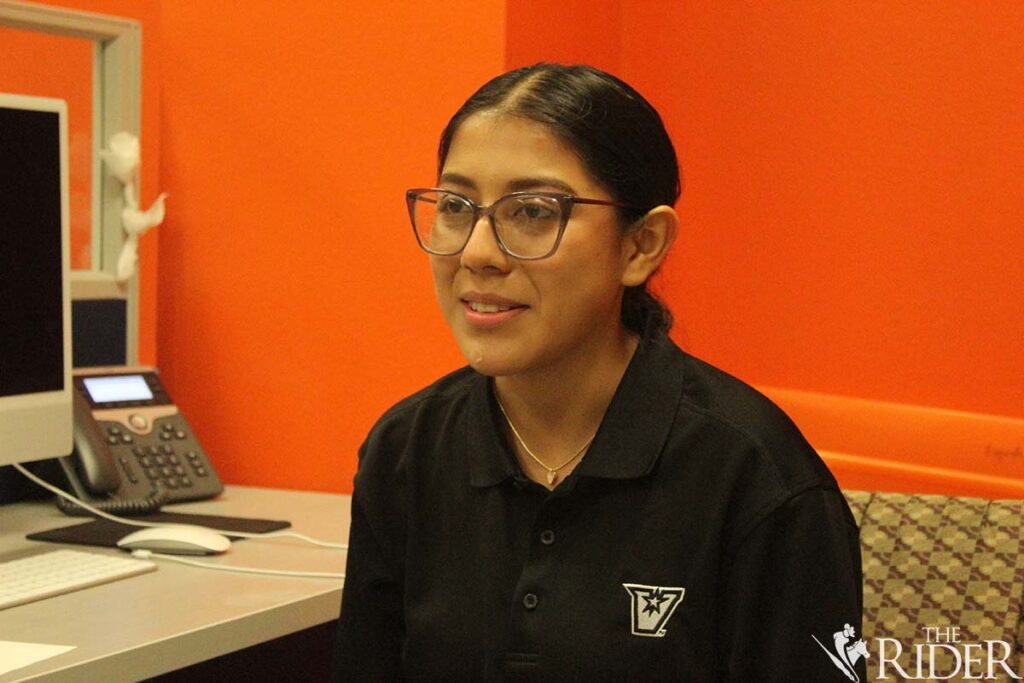
In some current posts on the UTRGV Students Facebook page, group members have voiced their concerns about transparency issues regarding the Student Government Association and what it has been doing.
The SGA, which represents the student body, has passed two pieces of legislation this semester, Senate Chair Laura Reyes said.
The SGA Accessibility Bill aims to “make reasonable accommodations in coordination with Accessibility Services to support the participation of members that have a documented disability.”
The accommodation “will ensure that if full physical participation in some club activities is limited, it will not negatively impact the participant’s members in the organization. The Center for Student Involvement is not responsible for any injury or accident that occurs within or result from an event associated with the student organization,” according to the bill.
The Legislative Efficacy Act aims to ensure that “if no action has been taken by the committee within fourteen (14) business days after referral of the legislation by the chair of the senate, the legislation shall be placed on the agenda for the next senate meeting following the fourteen business day deadline, and the Chair of the Senate shall be informed as a matter of record.”
Senator At-Large for Edinburg Andrea Gaytan said the Transparency Act was written last semester by Senator At-Large for Edinburg Skyler Howell, then Senator At-Large for Edinburg Alexis Uscanga Cadena and UTRGV student Noah Trstenjak.
“This is a bill that enacts that the Student Government Association to create an SGA Legislation tracker that will bring more transparency of work by previous, current and future terms towards the UTRGV student body,” Gaytan said. “This way the students know what SGA is doing for them, what legislations have been passed and how that affects them.”
Howell said he and Gaytan have been trying to keep up to date on issues students present on the page.
“They have over 16,000 students on there,” he said. “Anytime there’s a concern that students post on there, me and Andrea, we view whatever the issue is and we do our best to resolve it in our capacity.”
Howell said the SGA is trying its best to be as transparent as possible with the students.
“We hear you,” he said. “Of course, we can always do better and we’re striving to do better.”
Gaytan and Howell said they created a podcast that will be aired from 12:30 to 1:30 p.m. every Monday on Vaquero Radio.
“Our discussions reflect our personal views,” Gaytan said. “We use this platform to advocate for student concerns and share insights on various topics. We also invite special guests to provide diverse perspectives on issues that matter to the student body. So, I am proud to say that myself and fellow Senator Skyler Howell are breaking barriers between senators and students. We are also excited to continue advocating for them.”
She said the podcast reflects their and their guests’ personal opinions and does not reflect the overall opinion of the SGA.
“I do know transparency is always a concern, and it’s something that we definitely view as a priority, and we’re actively doing our best to always improve it,” Howell said.
The SGA hosts town hall meetings throughout the semester in various locations depending on which senator is hosting the meeting.
“The purpose of these town halls are to inform students about what SGA is and what we do for them, as students are sometimes unaware of what we are and how we are there to help them,” Howell said.
The SGA also hosts “Meet Your SGA Representatives,” where students are given the opportunity to learn about the SGA and who their senators are.
The Rider tried to obtain an interview with SGA President Odalys Saenz and Vice President for External Affairs Juana Elena Jimenez for this article. Neither Saenz nor Jimenez were available for an interview as of press time.





